
Bacterial secondary metabolites are natural products with various bioactivities. The group of Dr. Anita Loeschcke develops tools which allow the heterologic expression of gene clusters and activation of synthesis pathways. Her research focuses on the biosynthesis of various biological secondary metabolites in the bacterium Pseudomonas putida as well as on the evaluation of the antibiotic activity of these products.
After studying biology at Cologne University Anita Loeschcke prepared her diploma thesis at the Institute of Molecular Enzyme Technology (IMET) of Heinrich Heine University Düsseldorf at Forschungszentrum Jülich. She worked on heterologic expression of gene clusters in bacteria. In her PhD thesis she tested the so-called TREX tool for gene expressions in different bacterial hosts like Escherichia coli, Pseudomonas putida and Rhodobacter capsulatus and focused on carotenoids as target products. Since having finished her PhD at HHU Düsseldorf in 2012, Anita Loeschcke is working as a Post-Doc at IMET. Together with the group “Bacterial Photobiotechnology” of Dr. Thomas Drepper she works on the development and use of different expression tools particularly with Pseudomonas putida. The spectrum of target products is extended to other secondary metabolites like other terpenes, pyrrole alkaloids, lipopeptids, violaceines and phenazines. The regulation of the bactericidal effectiveness of these products is another important part of her research.
Anita Loeschcke`s first contact with the BioSC was in the BOOST FUND project PNP-EXPRESS. Then she was intensely involved in the SEED FUND project BioSAF where she was able to verify two recently identified Ccd2-type genes with catalytically active gene products. Since May 2017 she is the leader of the FocusLab CombiCom. In this interdisciplinary three-years project, known and new natural compounds are produced with new methods of molecular biology and their effectiveness for plant protection and for medical purposes is evaluated. In parallel to the biological research, the acceptance for products from synthetic-biological procedures in society will be analysed and strategies for their market launch will be developed.
Dr. Anita Loeschcke
Institut für Molekulare Enzymtechnologie (IMET)
Heinrich-Heine-Universität Düsseldorf
Stetternicher Forst
52425 Jülich
Email: a.loeschcke@fz-juelich.de
On 1st September 2017, a BioSC Spotlight on the subject „Alternative Nutzungspfade der Durchwachsenen Silphie (Alternative utilisation paths of the streaky Silphie)“ takes place in the Forum of Campus Klein-Altendorf of the University of Bonn. The event will be held in German.
With this event, we would like to make a contribution to the bioeconomical strategy of North Rhine-Westphalia, by showing how the low-input plant Silphie can be improved for manufacturing of high-quality products. Up to now, Silphie has mainly been seen as maize substitute for biogas production. In addition there were considerable establishment difficulties, because of very elaborate planting procedures which can now be very much simplified, by a new-established seeding technique.
In North Rhine-Westphalia numerous facilities deal with different aspects, e.g. alternative utilisation paths, which will be introduced to the practitioners as well as companies and research facilities. Special insights will also be given by a guided tour showing field experiments.
Date: 01. September 2017
Venue: Forum at Campus Klein-Altendorf, University of Bonn (Campus Nord, Campus Klein-Altendorf 1, 53359 Rheinbach)
Deadline: 25.08.2017
Registration is open! You can register here.
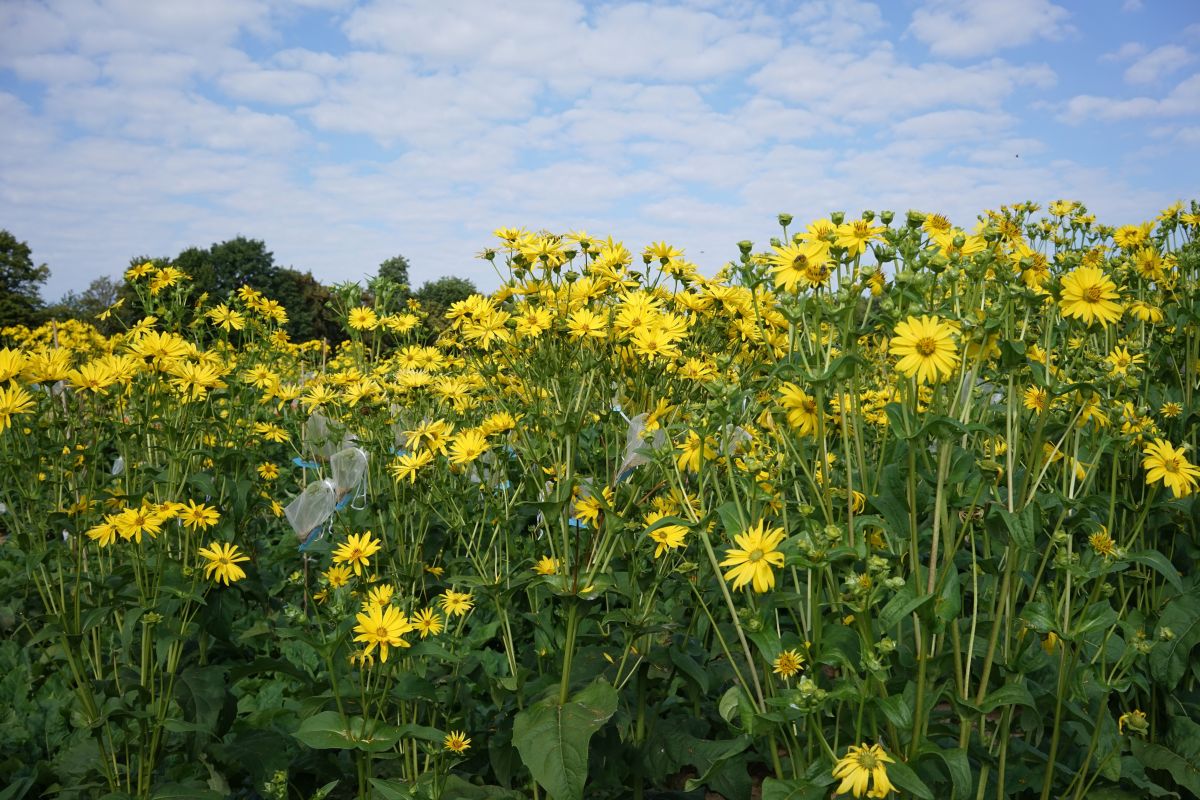
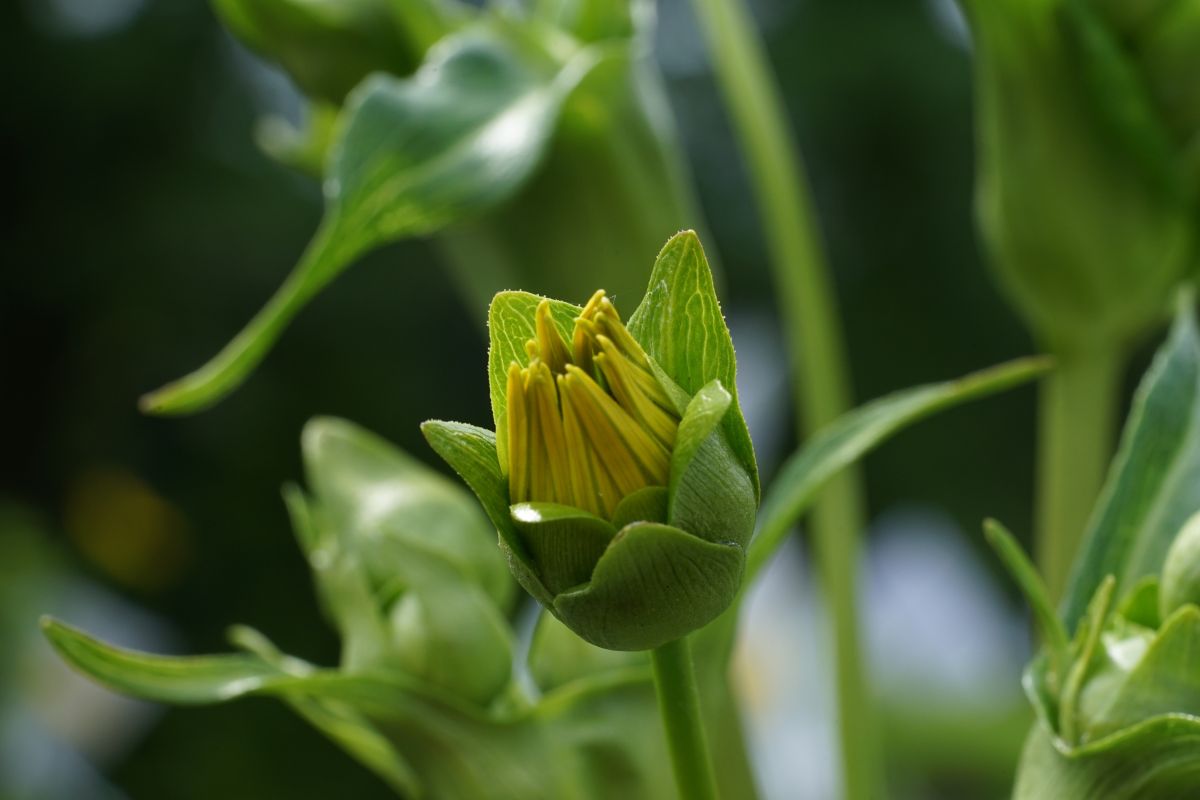
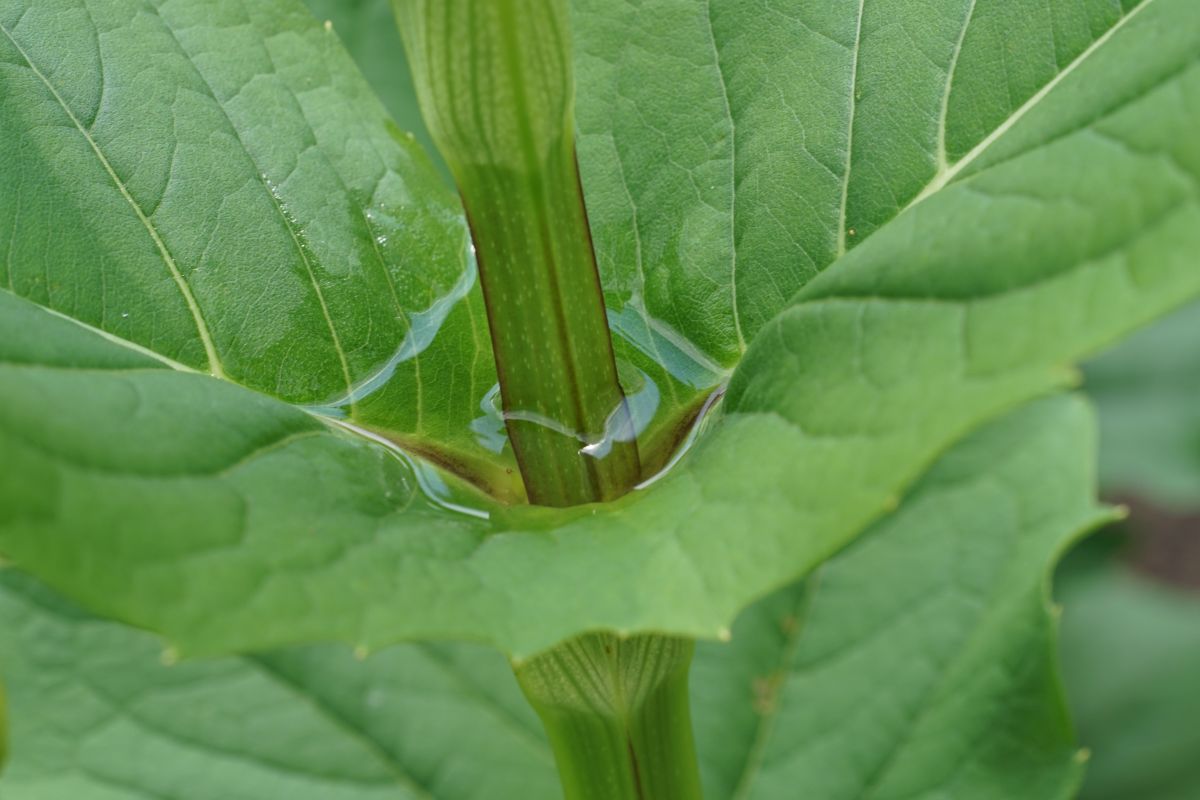
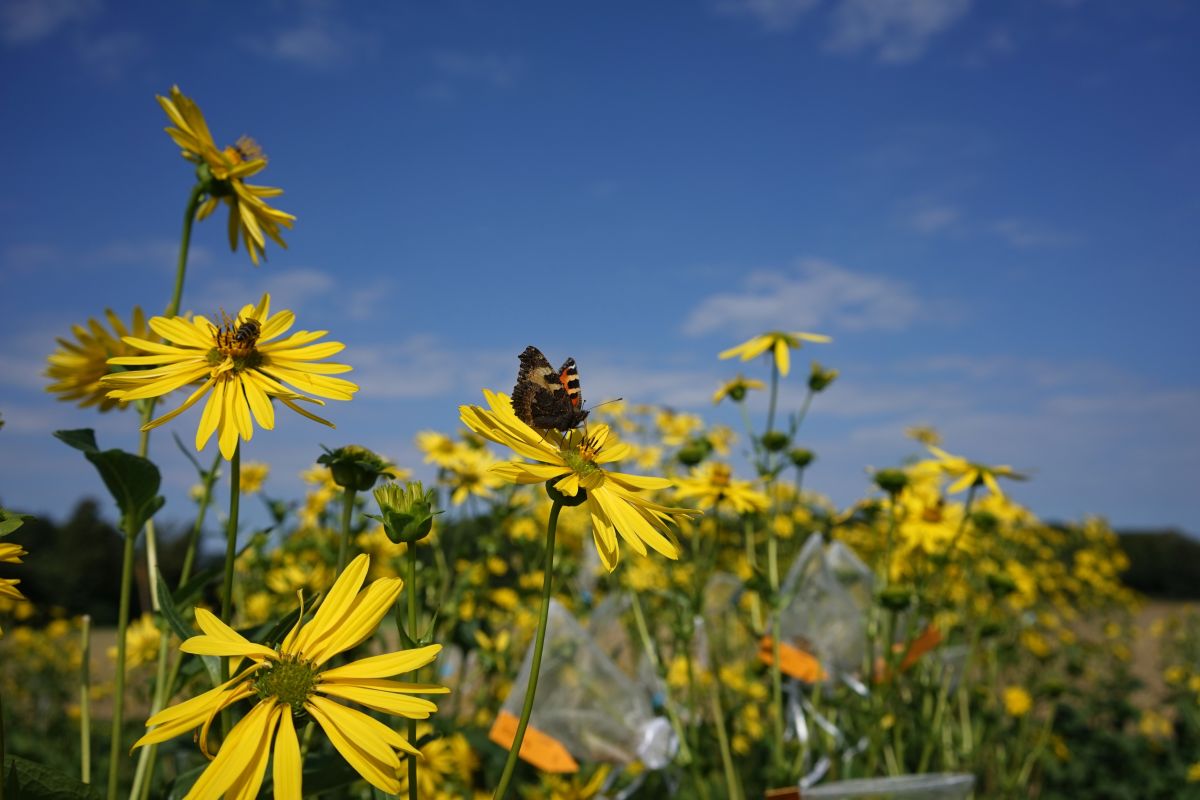
Preliminary programme:
BioSC Spotlight - Alternative Nutzungspfade der Durchwachsenen Silphie |
||
| 09:45 | Arrival | |
| 10:00 | Welcome | Prof. Dr. Peter Westhoff, Prorektor für Forschung und Transfer HHU Düsseldorf, BioSC |
| 10:15 | Keynote: Silphium - der Mais der Zukunft? | Prof. Dr. Peter Westhoff, Prorektor für Forschung und Transfer HHU Düsseldorf, BioSC |
I. |
Session 1: Anbauoptimierung
Chair: tba |
|
| 10:30 | Sägerätentwicklung | Andreas Schäfer, Institut für Landtechnik, Universität Bonn |
| 10:50 | Keimverhalten und Jungpflanzenentwicklung |
DDI Dr. Markus Gansberger, Österreichische Agentur für Gesundheit und Ernährungssicherheit, Wien |
|
11:10 |
Erfolgreiche Etablierung durch Aussaat | Johannes Köhler, Thüringer Landesanstalt für Landwirtschaft |
|
11:30 |
Donau-Silphie: Mit dem Praktiker zum Erfolg | Ralf Brodmann, Metzler & Brodman KG, Donau Silphie |
| 11:50 | Guided tour to the field trials at Campus Klein-Altendorf | |
| 12:45 | Lunch |
|
II. |
Session 2: Ökologische Bedeutung
Chair: tba |
|
| 13:50 | tba | tba |
| 14:10 | Die Durchwachsende Silphie als alternative Trachtpflanze für die Honigbiene Apis mellifera (L.) und andere Blütenbesucher | Dr. Andrée Hamm, Agrar- und Produktionsökonomie, Universität Bonn |
III. |
Session 3: Bioraffinerie-Konzepte
Chair: tba |
|
| 14:30 | tba | Martin Schmid, Michael Dickeduisberg, Landwirtschaftskammer NRW |
| 14:50 | Advanced Pulping of Perennial Plants – Ein Vergleich verschiedener Biomassen mehrjähriger Pflanzen für eine vollständige Verwertung in einer Bioraffinerie | Dr. Holger Klose, RWTH Aachen, BioSC |
|
15:10 |
Coffee break |
|
IV. |
Session 4: SPREAD - Silphium Perfoliatum – Ressourcenbewertung und Entwicklung (BioSC)
Chair: tba |
|
| 15:40 | Genetische Diversität | Dr. Elena Pestsova & Dr. Christian Wever, HHU Düsseldorf, BioSC |
| 16:10 | Chemische Analyse der Gattung Silphium hinsichtlich einer Nutzung in Bioraffinerieprozessen | Anne Lunze, RWTH Aachen, BioSC |
| 16:30 | S.perfoliatum als Rohstoff für die Leichtbeton- und Papierherstellung | Martin Höller, Universität Bonn, BioSC |
| 16:50 | Closing remarks | tba |
| 17:00 | Get-together with snacks and drinks | |
On 30th June 2017, „BioSC in Dialogue“ offered a lecture in Aachen together with the citizen`s forum RWTHextern. Prof. Dr. Georg Noga, professor for horticulture at the University of Bonn, presented the concept of Vertical Farming, an innovative approach for food production in metropolitan areas. The lecture met an interested audience and ended with a lively discussion.
The world population is expected to increase to 9 billion in 2050. Most of the people will be living in metropolitan areas. To ensure a sufficient and healthy food supply, an additional agricultural area of 10 billion hectares would be needed which would mostly have to be provided by so far untouched ecosystems.
One concept for food supply in the world-wide rapidly growing metropolitan areas is the concept of Vertical Farming: the production of food in and on multi-level buildings. Food plants are cultivated with hydroponic techniques: they are raised in a soil-free nutrient solution and the roots are stabilized e.g. with sand or gravel, if necessary. The nutrient solutions can be recycled which allows to save up to 90% of water. Land requirements can be reduced by a multitude of 1000 compared to conventional cultivation. By increasing CO2 concentration with CO2 from the heating, yields can be increased by up to 60% and secondary metabolite concentrations by up to 35%. Moreover, the plants are protected from weather events like drought, frost or hail which allows horticulture at almost every location, and pests and diseases are easier to control.
Prof. Noga presented different pilote facilities which combine plant production with animal production, e.g. cultivation of fish, or which have a supermarket integrated. He presented calculations that the vegetables needed in a city like Bonn could be provided by a Vertical Farming facility with the size of an average car park.
However, this kind of plant cultivation ist mainly applicable to vegetables and herbs. In the course of breeders` activities to reduce the size of fruit trees it may become suitable for fruits as well. But potatoes, cereals, rice and maize will still have to be cultivated outdoors in the future.
A main disadvantage of Vertical Farming is the need for additional lightning with LED lamps. This requires a lot of energy and causes high running costs and high producer`s prices. Currently, LED manufacturers work intensely on improving energy efficiencies. Despite the problems, Vertical Farming is already being practiced, e.g. in South Korea where high population density and strong air pollution make it necessary. Prof. Noga pointed out the considerable research and innovation potential of Vertical Farming.
The about 50 guests had many questions and comments. For instance they questioned whether Vertical Farming can be cost-efficient when considering real estate prices in metropolitan areas. Other contributions referred to limited numbers of plant varieties and to the cultivation of genetically modified plants. The event ended after a lively half-hour discussion.
The BioSC welcomes a new Core Group. PD Dr. Wolfgang Britz is head of the group „Economic Modeling of Agricultural Systems“ of the Institute for Food and Resource Economics at the Rheinische Friedrich-Wilhelms-Universität Bonn. His research focuses on the impacts of agricultural, environmental and trade policies on the agricultural and food sector, the environment and rural areas based on quantitative analysis with different types of economic simulation models.
The group of Wolfgang Britz was established in 2017 and focuses on the development and application of economic simulation models from farm to global scale to analyze quantitatively questions related to sustainability and provision of eco-systems services by agri-food systems. Thereby, the group serves as a hub for economic modeling at the agricultural faculty and collaborates in numerous projects within international research networks.
Wolfgang Britz obtained his doctorate degree in agricultural economy in 1994 at the University of Bonn. Afterwards he was a consultant at EuroCARE, EUROSTAT and FAO. He returned to the University of Bonn where he finished his habilitation in agricultural policy and quantitative modeling in 2015. In 2016, Wolfgang Britz temporarily headed the chair of Production Economics, before becoming head of the group Economic Modeling of Agricultural Systems this year.
PD Dr. Wolfgang Britz
Economic Modeling of Agricultural Systems
Institute for Food and Resource Economics
University of Bonn
Nussallee 21
D-53115 Bonn
phone: ++ 49 - 2 28 - 73 29 12
Worldwide, a tremendous amount of food is lost during harvest, transportation and storage. A reduction of these losses is of major importance for a for a sustainable food security. This challenge is being addressed within the BioSC project RIPE. Its focus lies on the plant hormone ethylene, which influences fruit ripening.
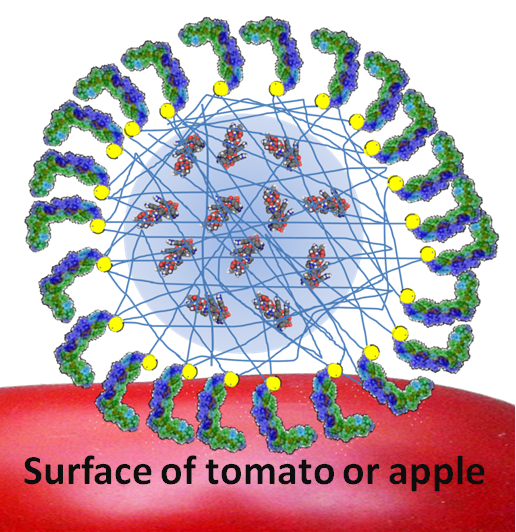
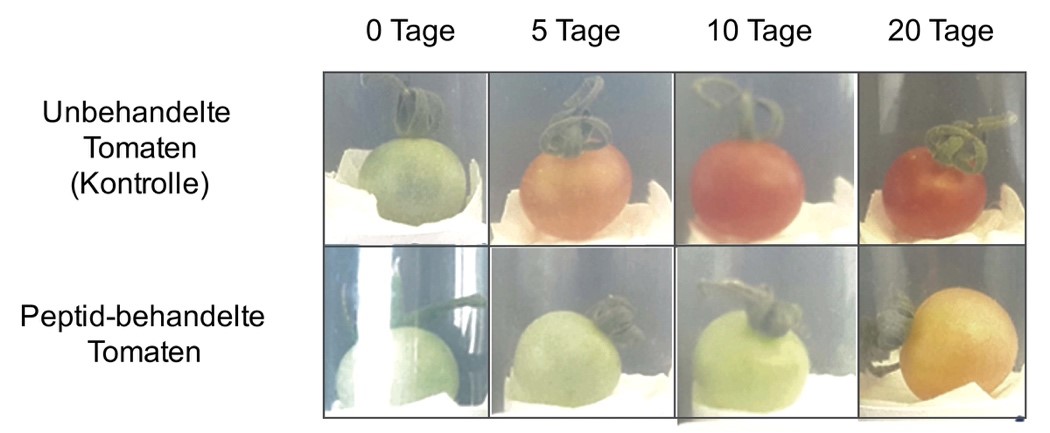
Synthetic peptides derived from proteins involved in the ethylene response provide a promising starting point to delay ripening and senescence of fruits and vegetables and thereby preventing spoilage without the need of transgenic plants. Within the project RIPE, these ripening-inhibiting peptides and their application on different types of fruit will be optimized to promote the potential commercial usage of innovative ripening inhibitors.
So far, the group of Prof. Groth (HHU Düsseldorf) mainly focussed on the molecular understanding of interactions of the synthetic peptides with the ethylene receptor and was able to show which domain is crucial for the interaction. Current protein crystallization studies will provide further insights into the interaction of ripe-inhibiting peptides with proteins of the ethylene pathway. By means of computer-based molecular simulation studies a model of the peptide receptor and various peptide variations were developed by the group of Prof. Gohlke (HHU Düsseldorf). The model enables in silico approaches to analyse peptide specificity and subsequent redesign of peptides for tailored interactions.
The delivery of the ripe-inhibiting peptides to the surface of fruits and vegetables is carried out via microgel containers which are supposed to release the peptides over time. The group of Prof. Pich (RWTH Aachen) was already successful in synthesizing microgels that can bind the synthetic peptide NOP-1 via carboxylic and acid groups. The group of Prof. Schwaneberg (RWTH Aachen) developed specific anchoring peptides which allow for reversible binding of the microgel containers to the fruit surface. The binding poses a challenge since the microgel container has to be resistant to rainfall, but at the same time it must be possible to wash it off before consumption.
Post-harvest experiments were carried out to analyse if the isolated peptide really has the desired effect on the ripening process. Therefore, the group of Prof. Noga (University of Bonn) applied different concentrations of the peptide NOP-1 on the surface of apples and tomatoes and was indeed able to observe a delay of the ripening process. Furthermore it was investigated if the application of peptides has any influence on quality parameters of treated apples and tomatoes. Fortunately that was not the case.
So far the results from the RIPE project are very promising and show that he NOP-1 peptide has the potential to delay fruit ripening while maintaining the fruit quality. This would allow an innovative way to control the ethylene pathway without the need for post-harvest chemicals or transgenic plants.
On 12th May 2017, the 17th BioSC Lecture took place at Forschungszentrum Jülich. Dr. Andreas Kleinschmit von Lengefeld, Director of Research and Innovation at the FCBA in Champs-sur-Marne, France, presented Europe's largest institute for forestry and wood processing.
The French Institute of Technology for Forest-based and Furniture Sectors (FCBA) is a technology centre dealing with forestry, cellulose extraction and processing, wood construction and furniture. Due to its diversity in research and development it is unique in Europe. It is the only actor in the wood sector starting with the biotechnological improvement of forest biomass production, working from nano to macro structure, as well as integrating socio-economic and environmental aspects into its activities.
Following Sweden, Finland and Spain, France has the fourth largest forest area in Europe. The hardwood area of French woods with more than 10 million ha corresponds to the whole forest area of Germany. Since the territorial reform in 2016, the new region Aquitaine belongs to the leading regions in Europe concerning value creation in the forest-based sector. French politics has taken up this sector as trendsetting in the group of 16 most important industries in France and has set up programmes for research and innovation. About 500 international partners of the FCBA are distributed worldwide but the focus lies in Europe. The aims of the FCBA research projects are technology transfer and transfer of research results into industry.
In addition to a basic funding by the French state the FCBA is founded by third-party projects. About 150 such projects make up nearly half of the annual budget. The funds are evenly distributed among national, European and international projects. About 100 employees with various backgrounds bring a wide spectrum of knowledge into the projects. The FCBA emphasizes certified education and offers a PhD candidates programme in cooperation with universities.
One research focus of the FCBA is the adaptation of forestry to the climate change. Here, the institute takes advantage of decades of breeding experience e.g. to shorten life cycles of trees or to raise their adaptability to drought. Moreover, alternative wood management models are developed. The work is complemented by economic analyses of competitiveness and sustainability.
BioSC Lecture "Inspired by nature - Development of sustainable flavour modifiers"
Dr. Jakob Ley, Symrise AG
04. August 2017 Forschungszentrum Jülich, IBG-2
Host: Bioeconomy Science Center
More Information
BioSC Spotlight "Alternative Nutzungspfade der Durchwachsenen Silphie"
01.September 2017, University of Bonn / Campus Klein-Altendorf
Host: Bioeconomy Science Center
More Information
„Bioökonomie: Pflanzen als nachhaltige Rohstoffe für Biokraftstoffe“
Prof. Markus Pauly, HHU Düsseldorf
07. September 2017 HHU Düsseldorf, Haus der Universität
Host: "BioSC in Dialogue" and "Forschung im Fokus"
More Information
2nd International Bioeconomy Congress
12.-13. September 2017 in Stuttgart-Hohenheim
Host: University of Hohenheim / BioPro Baden-Württemberg / Ministry for Science, Research and the Arts of Baden-Württemberg
More Information